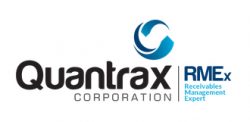
My name is Mark Namba, and a few years ago, I left a long career in contact center solutions, to work with intelligent debt collection software. In hindsight, my timing could not have been better. What a lot has happened in 3 years! AI is in the news, front and center. The business world is past talking about it and AI is solving real-life problems. Here is a quote on AI’s reach and potential. “In 2017, the global AI market was expected to grow approximately 175 percent from 2016 levels, reaching a forecast size of 2.4 billion U.S. dollars.”
And what about our collection industry?
In spite of a being a solidly tech-driven industry, we have sadly not been very proactive when it came to spectacular innovation. Collection operations were traditionally run by non-technical people, so it was the responsibility of collection software developers to innovate. In some very good times, sales became more important than innovation for the leading collection software companies. They did not take advantage of the benefits of Moore’s law which states that “processor speeds, or overall processing power for computers will double every two years”. Think about what Expedia did for the travel industry, what Uber did for private transport, how GPS technology changed navigation, how the job of assembling and painting cars was transferred to robots, and what Amazon did for the way we shop. What was behind all of those innovations that changed our lives so quickly? Technology! And what great innovations can the collection industry be proud of? The predictive dialer? That was in the 1980’s!
Industry insiders, many running their businesses on dated or dying software platforms, will probably agree, that most of the collection software industry did not make it a priority to innovate in the way that a company like Tesla did for electric and self-driving cars. Great technological advances do not take place overnight, and it will be interesting to see how companies will go from waiting too long, to delivering modern concepts like AI. It’s already happening. Many companies are ignoring significant product gaps, to “spin” their situations and blur the boundaries and concepts of AI, machine learning, automation and data analytics. It will be confusing and it probably won’t be long before companies start to advertise new “AI platforms” that have no reason to be described as AI-based systems.
What is the difference between traditional data-based systems, and AI-based software platforms (expert systems)?
Expert systems utilize a user-defined “knowledge base” and a software program called an “inference engine”. Business processes and work-flows are quickly modified by changing the knowledge base. Program changes are usually not required. Compare that to data-based systems, where programs and data are closely related, and changing the way the system works usually requires program changes.
I talked to Ranjan Dharmaraja, the CEO and founder of Quantrax, who was responsible for designing and creating the first knowledge-based software platform for collections, over 25 years ago. Here is what he said when I asked him about introducing the power of AI to the collection industry.
“Collection software vendors can not simply change a traditional data-based design to a knowledge-based system. The architecture of an AI-based system is fundamentally and significantly different from that of a conventional data-based system. An AI-based platform uses its inference engine to work with knowledge, user input and circumstances, to make decisions and exhibit intelligent behavior. ”
When I asked for his thoughts on how the industry could move from automated systems to AI, he responded as follows. “We are now in the third wave of business transformation (The first and second were the Henry Ford and the more recent automation eras). This wave specifically refers to adaptive processes, driven by real-time data. As if not wishing to be left behind, I have even seen some companies add “AI” to the beginning or end of their product name, as if a few changes would qualify their products to have artificial intelligence! There is one classic test for AI. It was developed by Alan Turing in 1950, and is a test of a machine’s ability to exhibit intelligent behavior, equivalent to, or indistinguishable from, that of a human. That is the only known test for AI.”
We do have examples of spectacular successes for AI. While driverless cars are a striking example of AI in modern life, it was over 10 years ago that IBM’s supercomputer Deep Blue beat a world chess champion, for the very first time, under tournament conditions. And most us remember IBM Watson’s 2011 showdown that destroyed the two all-time Jeopardy champions. Interestingly, Watson was made up of ninety IBM POWER7 750 servers, which happens to be the same hardware platform that Quantrax uses for its collection software!
When I asked Ranjan for some interesting thoughts on AI in the collection industry, his response was a familiar one.
“We created an AI-based system 25 years ago. For many reasons, it is one of the best-kept secrets in the industry. Why did we call it AI 25 years ago? Because in addition to many intelligent features, the system could “look at” millions of account in real-time or during the day, and make the same decisions that a human expert would make. Unfortunately, some skeptics would say that would not pass the Turing Test because the software could not talk to you (as a manager would) and tell you what to do with a specific account. That is a technicality – the system was thinking and making decisions like an experienced collection manager, something no one could do.
Today, we have products that will pass the Turing Test. Towards the end of 2017, we announced a software robot called Alex, that performed at the level of a mid-level agent. If you put an agent in one room and Alex in another, and had a consumer talk to each of them, the robot would be as effective as the agent. Alex does not use a computer keyboard for its input. The consumer can talk to the robot in natural language, and the robot will respond in full sentences. Our robots can understand and communicate in at least six languages, giving them a few advantages over their human counterparts!”
We live in interesting times. Our investment in artificial intelligence has taken Quantrax down some expensive and challenging paths, solving problems that others have not even considered. As it gets more difficult to hire and retain collectors, as compliance requirements continue to challenge us, and as millennials force us to change traditional rules by insisting that they will contact us only when it is convenient for them, and using their smartphones, AI and modern technologies will offer us much-needed new ideas and solutions. This is not the time to be partisan or defensive. Those of us who need to play catch up, must do so quickly. As software vendors, we have a great responsibility to help our clients and our industry by presenting viable technology options, both clearly and factually.
Ranjan Dharmaraja is Chief Technologist and CEO of Quantrax. The June 2018 issue of the ACA’s Collector Magazine published a 7-page article on the potential of AI in the collection industry. Ranjan will be speaking on the topic of AI at the ACA’s annual convention in Nashville, in July.
Mark Namba
Director of Business Development and Operations, Quantrax Corporation Inc.
Voice : (301) 657-2084 Ext 154 Cell : (801) 419-5916
E-mail: markn@quantrax.com
Web: www.quantrax.com




